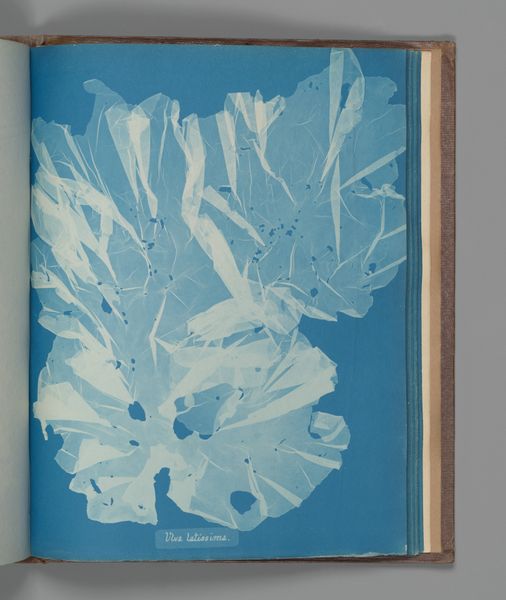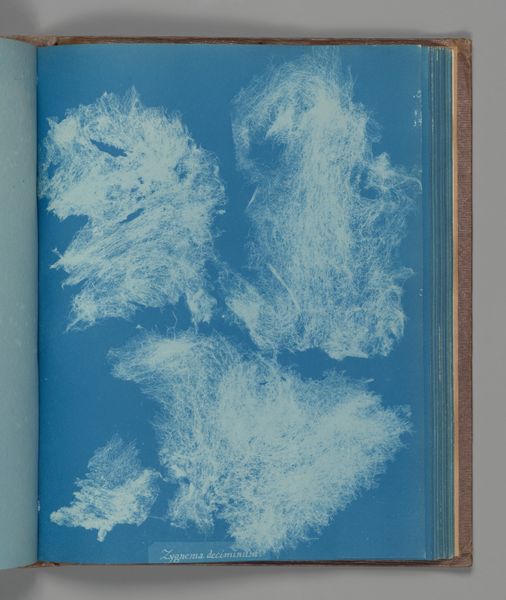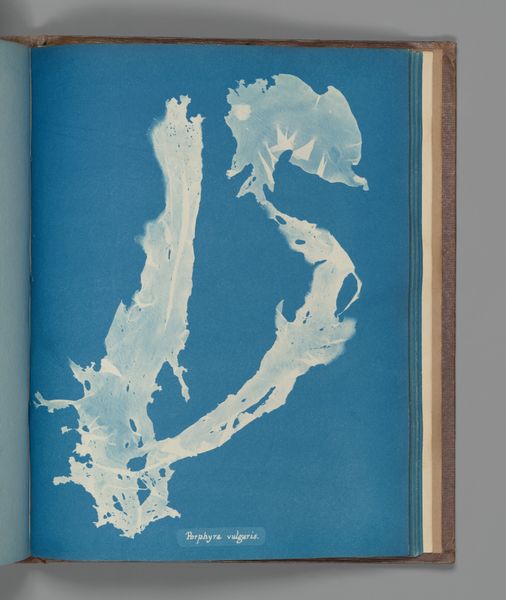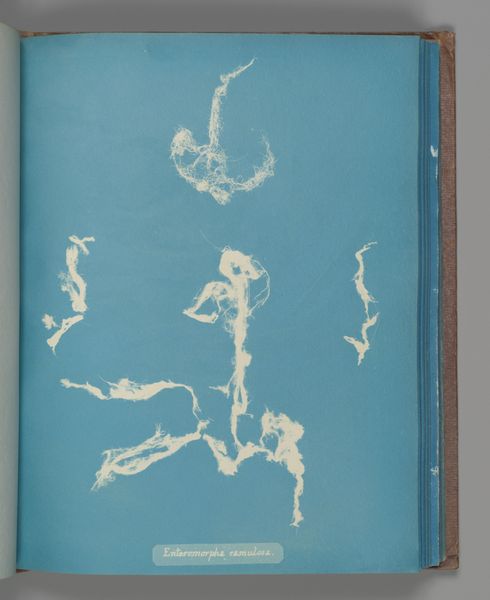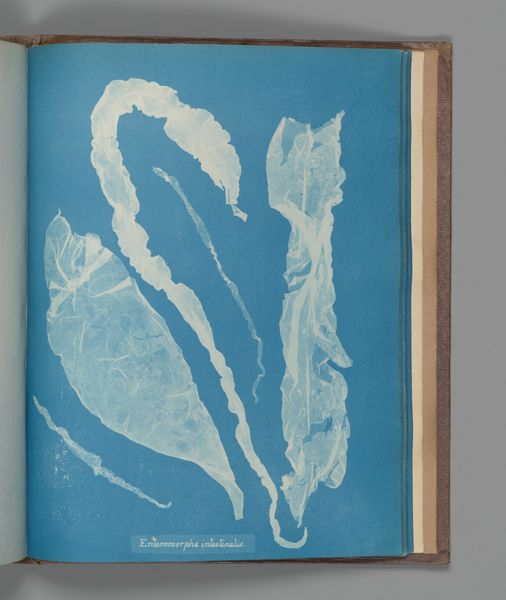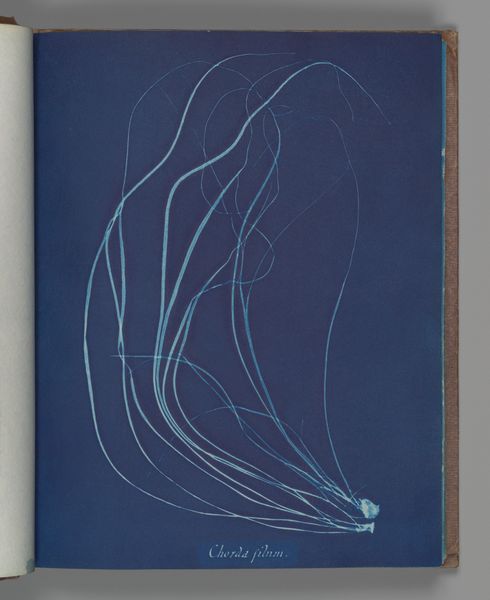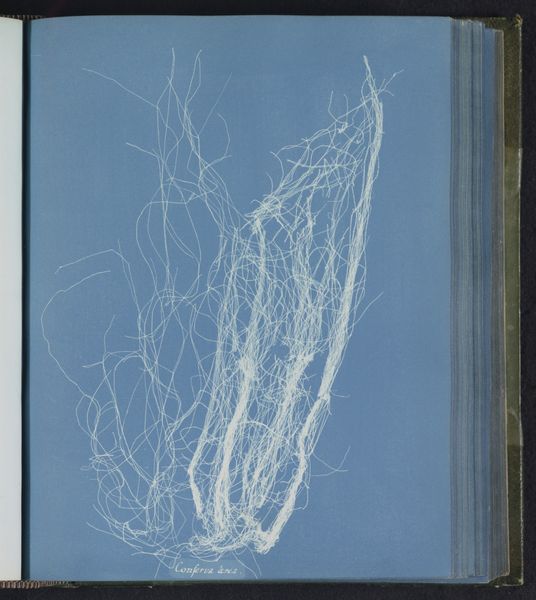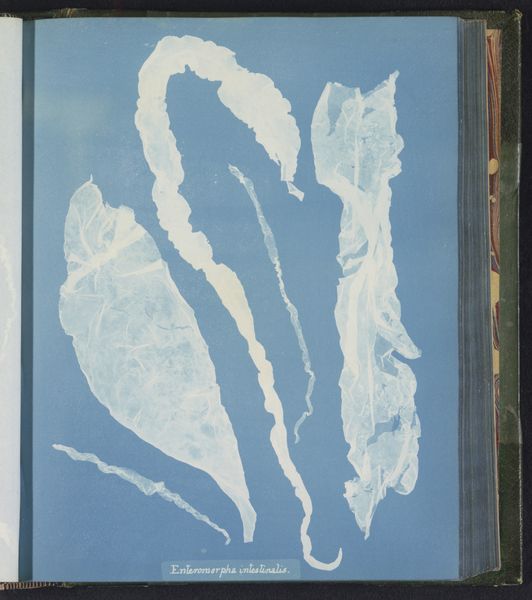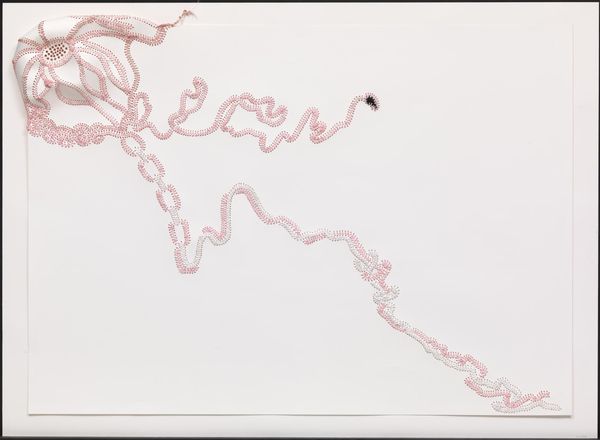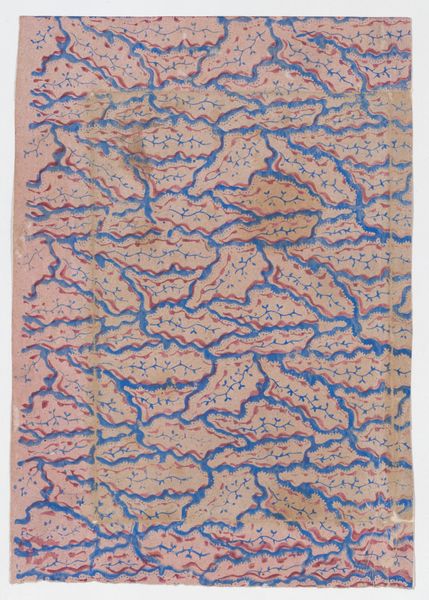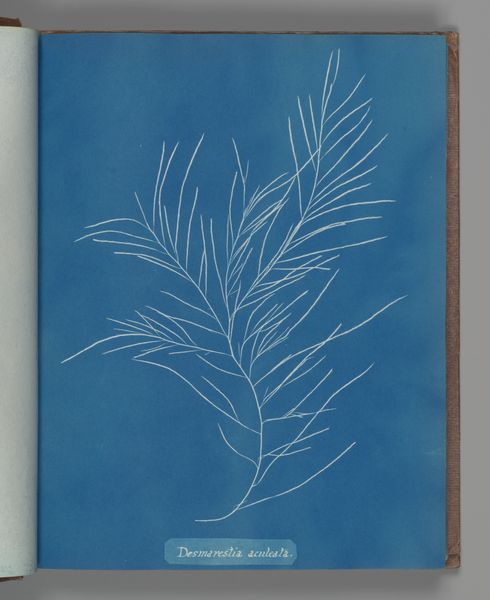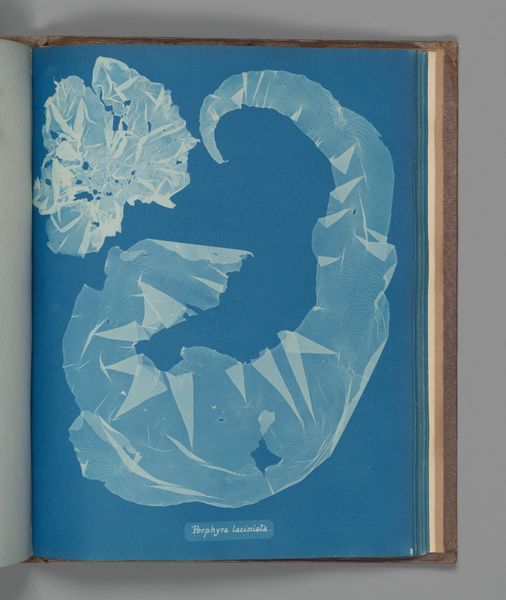
print, cyanotype, photography
#
still-life-photography
#
organic
#
non-objective-art
# print
#
abstract
#
cyanotype
#
photography
Dimensions: Image: 25.3 x 20 cm (9 15/16 x 7 7/8 in.)
Copyright: Public Domain
Editor: So here we have Anna Atkin's "Enteromorpha intestinalis ß" from the early 1850s, a cyanotype now at the Met. It’s striking how abstract it feels, especially considering when it was made, it's like looking at sea organisms presented almost as ghostly apparitions against the rich blue. What stands out to you? Curator: What interests me most is the cyanotype process itself. Atkins wasn't just making art; she was documenting. This method, accessible and reproducible, was a vital tool for scientific cataloging. How does the materiality of the cyanotype, its relatively simple process, challenge traditional hierarchies between artistic creation and scientific recording, between art and craft? Editor: That's a great point. So, the emphasis isn't necessarily on artistic interpretation, but more on the mechanics of its creation and use as a reproducible document? Curator: Precisely. Consider the accessibility of the cyanotype. It democratized image-making to an extent, allowing for wider participation. How might we consider this in the context of Victorian England and gendered divisions of labor in the sciences? Editor: I guess that the traditional art world may not have considered this to be valuable initially due to its scientific process. Did people initially look at Atkin’s photographs with a different understanding than they view art? Curator: The very notion of "art" at the time was deeply tied to notions of individual genius and rarefied skill. Atkins’ process highlights labor, chemical reactions, and replicability, decentering the artist as the sole author. That’s fascinating to consider now. Editor: I see. By examining the process, we start to understand the societal perspective during that period and its potential accessibility. Thank you! Curator: Absolutely, by questioning those divisions, we appreciate its wider impact!
Comments
No comments
Be the first to comment and join the conversation on the ultimate creative platform.
